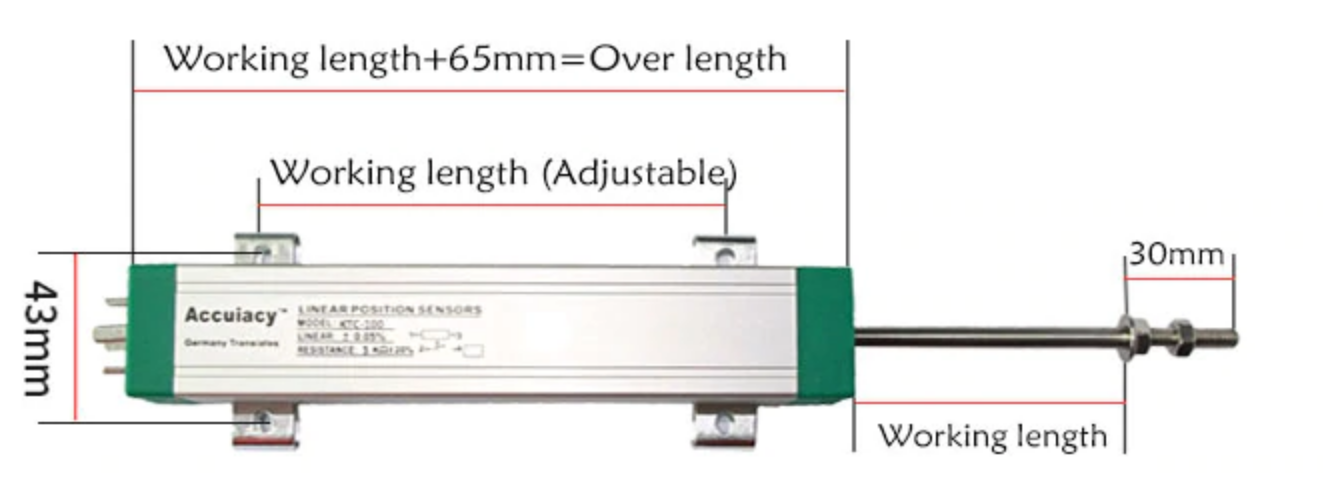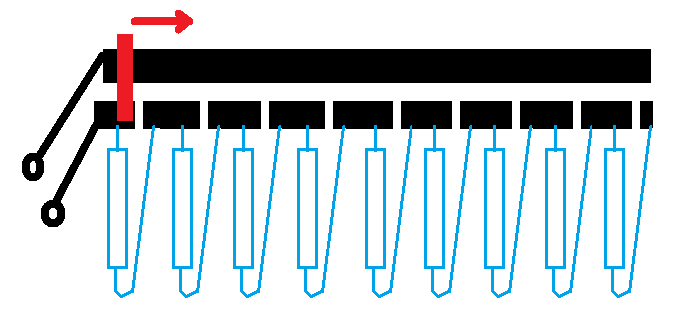Hi I need to use a 25cm (10inch) long slider potentiometer for my project. I can't find them anywhere so I'm thinking of getting a PCB made and putting some resistive material on it. My PCB manufacturer supports carbon ink for contacts, can I use it for resistive element?
Edit: I want to get 12 bits of resolution from the pot. I am using a stm32 chip for ADC with it so I will have a 5V potential difference across it. Aiming for a 10K ohm value. Reliability over sustained use is required since it is a part of MIDI device. I have considered belt gear drive with angle sensor but a slider pot is much simpler and cheaper
Edit 2: contact less options - Would serve my purpose better actually, but I don't know if distance sensors like IR or ultrasonic will work for 25cm length and be accurate enough.





